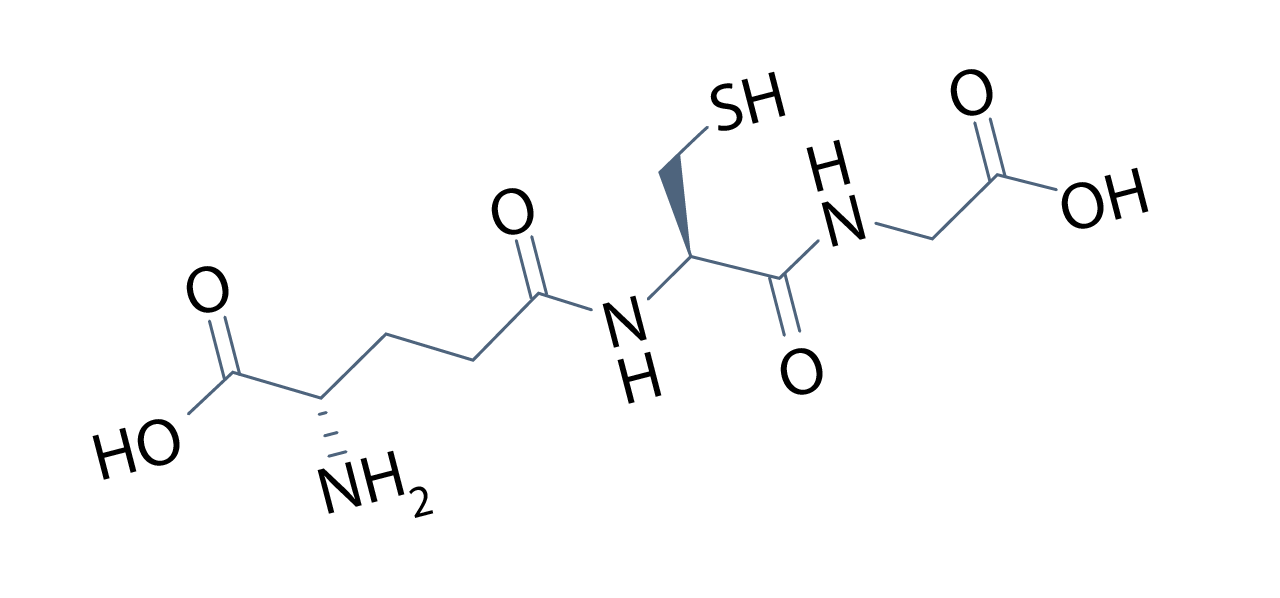Our bodies are always striving to achieve balance. In our mitochondria, thousands of chemical reactions take place every second to generate the energy necessary for life. In addition to producing energy, the mitochondria generate free radicals as a byproduct.
These free radicals can essentially steal electrons from neighboring structures, causing oxidation and damage in their wake.
Free Radicals and Antioxidants
Free radicals are also increasingly abundant in our environments due to pollution from heavy metals, volatile organic compounds, pesticides, herbicides, pharmaceuticals and other toxins. These free radicals accelerate cellular aging, and the energy loss from mitochondrial damage can result in immune dysfunction, often presenting as the common complaint of fatigue.
Antioxidants serve as the balancing force that combats free radicals, and our bodies use numerous antioxidants, such as alpha lipoic acid and vitamins A, C, and E. However, one antioxidant stands above the rest: glutathione, the master antioxidant.
Benefits of Glutathione
Glutathione is produced in the cytoplasm of every cell in our bodies and helps to recycle and recharge other antioxidants, such as vitamins C and E. Glutathione is a tripeptide molecule composed of the amino acids glutamate, cysteine and glycine.1 The reduced form of glutathione (GSH) is the biologically active form that contains a thiol group (−SH), making it an effective electron donor to neutralize free radicals, such as lipid peroxides, hydrogen peroxide and other reactive oxygen species.
The process of neutralizing free radicals, catalyzed by glutathione peroxidase, transforms reduced GSH into its oxidized glutathione disulfide (GSSG) form. The ratio of GSSG to GSH in the body is an important measurement of oxidative stress, with higher levels of GSSG indicating greater oxidative stress, whereas higher levels of GSH indicate protection against oxidative damage.2 Glutathione also plays an important role in the immune system by stimulating natural killer (NK) cell activity and promoting the healthy function of T-cells and other white blood cells.
N-Acetyl Cysteine Supplementation
Because cysteine is understood to be the rate-limiting substrate of glutathione production, supplementation with N-acetyl cysteine (NAC) has traditionally been a foundational approach to boosting endogenous glutathione synthesis. NAC is the standard of care, for example, for the treatment of acetaminophen toxicity because of its ability to replenish hepatic glutathione levels.3
Despite the widespread use of NAC as an antioxidant, this approach assumes the patient will effectively convert NAC to glutathione. For years, the prevailing belief of clinicians and researchers has been that oral glutathione has little to no bioavailability, with its molecular size thought to preclude its absorption.4
Bioavailability of Oral Glutathione Supplementation
However, the results of a 2014 study published in the European Journal of Nutrition challenged this prevailing belief about the oral availability of glutathione. Conducted by Dr. John Richie and his colleagues at Penn State University, this was the first long-term, randomized, placebo-controlled trial of oral glutathione supplementation. Participants were randomized to take either a placebo or oral GSH, which was formulated by Setria®, at a dosage of 250 mg or 1,000 mg per day for six months. GSH levels were tested in whole blood, plasma, erythrocytes, lymphocytes, and buccal mucosal cells at baseline and after one, three, and six months. Ratios of oxidized to reduced glutathione (GSSG:GSH) were calculated to evaluate redox status. After a one-month washout period, levels were tested for a final time.5
The results of this study were indisputable. Glutathione levels increased significantly from baseline at both dosages in whole blood and erythrocytes at three months and six months. After six months, taking 250 mg of glutathione per day increased glutathione levels by 17% in whole blood and 29% in erythrocytes. Taking 1,000 mg glutathione daily increased glutathione levels by 31% in whole blood, 35% in erythrocytes and 250% in buccal cells. In addition, NK cell cytotoxicity increased more than two-fold from baseline to three months in the high-dose group.5
The Bottom Line
Though there are many ways to support our antioxidant status and overall immune health, oral glutathione has been clinically demonstrated to be bioavailable. Supplementation not only increases blood levels of this master antioxidant but, in turn, supports immune function through elevated NK cell activity.
.png?sfvrsn=c0fd2cae_5)
Kareem Kandil, MD, ND is the Immune Foundations Clinical Brand Manager at Lifestyle Matrix Resource Center. Upon graduating from medical school at Ross University School of Medicine, Dr. Kandil went on to do an observership in integrative medicine and then pursued his Doctorate of Naturopathic Medicine (ND) at National University of Health Sciences in Lombard, IL.
References
1. Ketterer B, Coles B, Meyer DJ. The role of glutathione in detoxication. Environ Health Perspect. 1983 Mar;49:59-69. doi: 10.1289/ehp.834959. PMID: 6339228; PMCID: PMC1569131.
2. Ballatori N, Krance SM, Notenboom S, Shi S, Tieu K, Hammond CL. Glutathione dysregulation and the etiology and progression of human diseases. Biol Chem. 2009;390(3):191-214.
3. Rushworth GF, Megson IL. Existing and potential therapeutic uses for N-acetylcysteine: the need for conversion to intracellular glutathione for antioxidant benefits. Pharmacol Ther. 2014;141(2):150-159.
4. Witschi A, Reddy S, Stofer B, Lauterburg BH. The systemic availability of oral glutathione. Eur J Clin Pharmacol. 1992;43(6):667-669.
5. Richie JP Jr, Nichenametla S, Neidig W, et al. Randomized controlled trial of oral glutathione supplementation on body stores of glutathione. Eur J Nutr. 2015 Mar;54(2):251-263. DOI: 10.1007/s00394-014-0706-z. PMID: 24791752.





